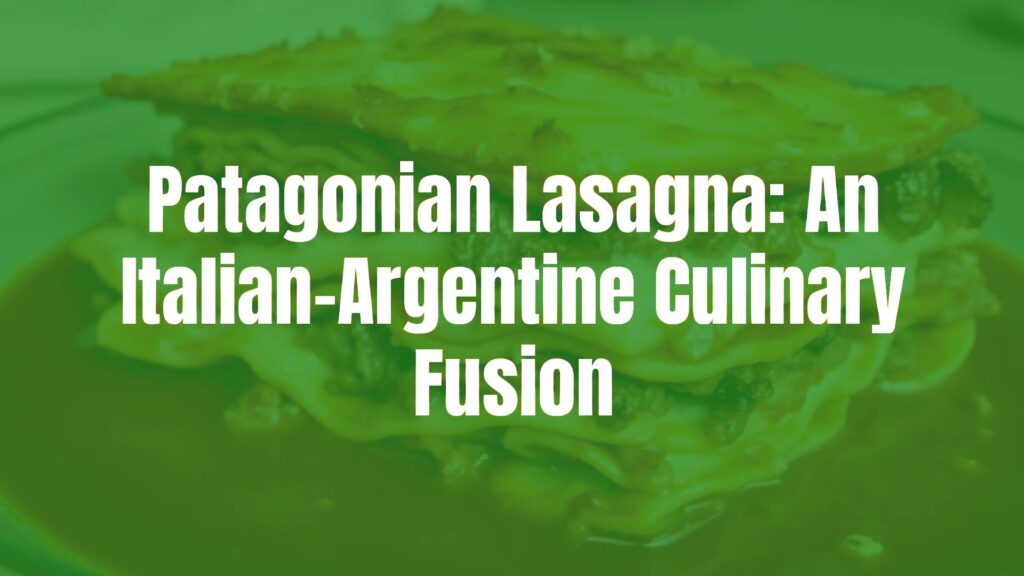Exploring Patagonian Lasagna: A Fusion of Traditions
Patagonian lasagna is a distinctive take on the classic Italian lasagna, reflecting both Italian culinary traditions and the rich, rustic flavors of Patagonia in southern Argentina and Chile. This fusion dish brings together hearty local ingredients and the comfort of traditional Italian pasta bakes, resulting in a lasagna that stands out for its regional character and satisfying depth.
What Sets Patagonian Lasagna Apart?
Unlike traditional Italian lasagna, typically layered with ricotta, mozzarella, and slow-simmered ragù, Patagonian lasagna frequently features local proteins and unique cheeses from the region. Lamb, for example, is a popular addition—an homage to Patagonia’s pastoral landscape. The dish is often characterized by robust flavors, perhaps incorporating smoked meats, wild mushrooms, and sheep’s milk cheeses. While the basic layered structure remains, the ingredients reflect indigenous and immigrant influences, resulting in a lasagna that is both familiar and refreshingly different.
Historical and Regional Context
The origins of Patagonian lasagna can be traced to the Italian diaspora, particularly the waves of immigrants who settled across Argentina and southern Chile in the late 19th and early 20th centuries. As these communities adapted their beloved recipes to the Patagonian setting, they swapped traditional ingredients for what was locally available. Over generations, lasagna evolved into an expression of Patagonian-Italian identity, especially popular at family gatherings and festive occasions.
Essential Ingredients and Hallmarks
A typical Patagonian lasagna features layers of fresh or dried pasta sheets, often enriched with fillings unique to the region. Common components include:
- Lamb or beef: Roasted, braised, or even cured cuts introduce deep, earthy flavors.
- Regional cheeses: Patagonian sheep’s milk cheese or local cow’s milk varieties replace or complement the traditional mozzarella or parmesan.
- Vegetables: Chard, spinach, or wild mushrooms add texture and nutrition, echoing foraged and farmed produce of Patagonia.
- Sauces: Creamy béchamel or a tomato-based sauce, often seasoned with native herbs or a hint of smoke, binds the dish together.
The finished lasagna is hearty and layered, with a golden, bubbling crust and a filling that is both creamy and packed with morsels of meat and vegetables.
Variations and Adaptations
Home cooks and chefs improvise with the bounty of the Patagonian region. Lamb might be replaced with guanaco (a wild llama relative) for a truly local twist. Smoked trout or venison may appear in coastal or mountainous communities. For vegetarians, wild mushrooms, squash, and local herbs create a satisfying, earthy alternative. Cheese varieties may shift according to availability—provolone, fontina, or even artisanal goat cheeses all have their place in regional kitchens.
Serving Suggestions and Pairings
Patagonian lasagna is usually served piping hot, often accompanied by a simple salad of bitter greens, roasted root vegetables, or pickled onions to balance its richness. It pairs beautifully with full-bodied Argentine red wines, such as Malbec or Cabernet Sauvignon, or a robust Patagonian Pinot Noir. For a more rustic experience, a crusty loaf of bread and a shared bottle of local cider make it perfect for communal tables and festive feasts.
Conclusion
Patagonian lasagna is more than just a regional adaptation—it’s a celebration of migration, landscape, and culinary creativity. It fuses the time-honored comforts of Italian food with the flavors and ingredients of Patagonia, resulting in a dish that is as nourishing for the soul as it is for the body.

